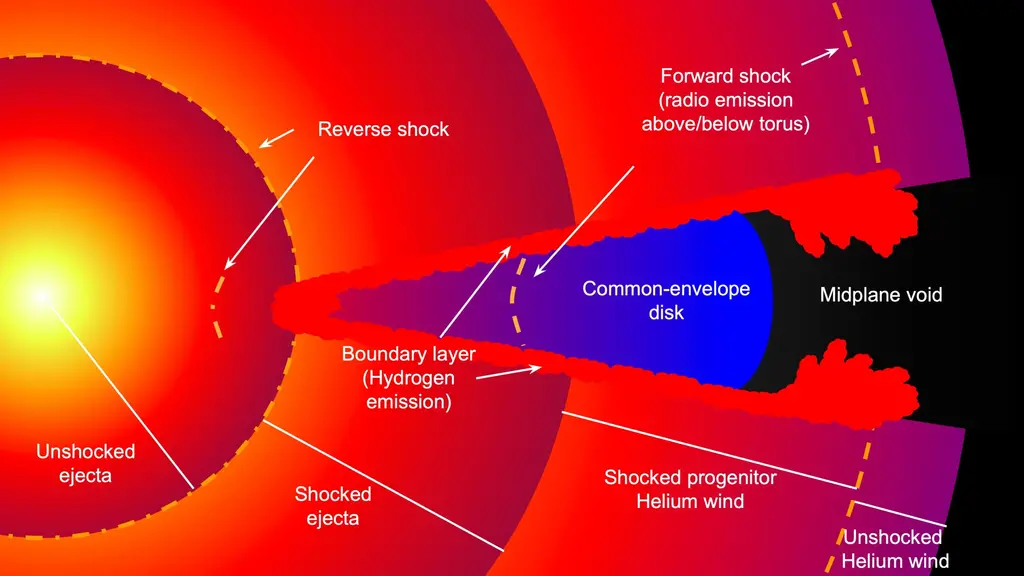*An international astronomical team has found a new clue about the mysterious 2014c star explosion *. The explosion was discovered eight years ago, but it continues to evolve even under the observation of scientists. These results help astronomers better understand how massive stars survive and die.

The study, published in the Astrophysical Journal, was led by UT Austin and included scientists from the University of Chicago. In 2014, astronomers found a sudden bright spot in the sky, a sign of a star exploding in space.
When an exploding star was first discovered, astronomers around the world scrambled to track it with telescopes because its light changed rapidly over time. By observing its evolution and using telescopes that can see visible light as well as X-rays, radio waves and infrared rays, scientists can infer the physical characteristics of the system.
By doing so many times, astronomers have identified features and grouped these exploding stars into one category. 2014c, as this particular event is named, looks like a so-called type Ib supernova. They are what happens when the largest known star in the universe dies.

In fact, scientists believe that 2014c may not be one star at first, but two stars surrounding each other, one of which is larger than the other. Larger stars evolve faster, expand, and absorb hydrogen from their outer layers. When it finally ran out of fuel, its core collapsed, triggering a huge explosion.
However, observations in the first 500 days after the explosion show that it emits more X-rays over time, which is unusual and is only seen in a few supernovae. "It shows that shock waves are interacting with dense matter," said Vikram dwarkadas, a professor of astronomy and Astrophysics at the University of Chicago.
The team set out to collect all the data on 2014c, including new data they obtained and data from studies over the past eight years, and incorporate it into a coherent picture of what happened to the star.
X-ray emission, infrared light and radio waves all show a unique pattern, that is, first increase and then decrease. Meanwhile, optical light -- measured by UT Austin's hubby Eberly Telescope -- appears to remain stable. Radio signals show that the shock wave is expanding at a very high speed, while optical light shows a slower speed.
The researchers believe that this strange behavior is related to the dense hydrogen clouds around the two stars, which were left behind early in their lives. When a star explodes, it produces a shock wave that moves in all directions at 67 million miles per hour. When the shock wave reaches this cloud, its behavior will be affected by the shape of the cloud.
In the simplest model, this cloud will be assumed to be spherical and symmetrical. However, if the cloud forms a "doughnut" around the two stars (that is, it is thicker around the middle), the thicker part of the ring will slow down the shock wave and appear as slower moving material in optical light. At the same time, in a thinner area, the shock wave will rush forward, as seen in radio waves. "It's like water hitting a stone in the center of the river," dwarkadas said.
The scientists say the problem remains, but this heterogeneity can explain the different velocities of shock waves displayed by different wavelengths. Scientists say the study provides valuable clues to the evolution of these stars and the mass loss of these systems. In a larger sense, it also provides clues to the life and death of these relatively mysterious stars.